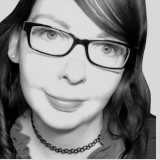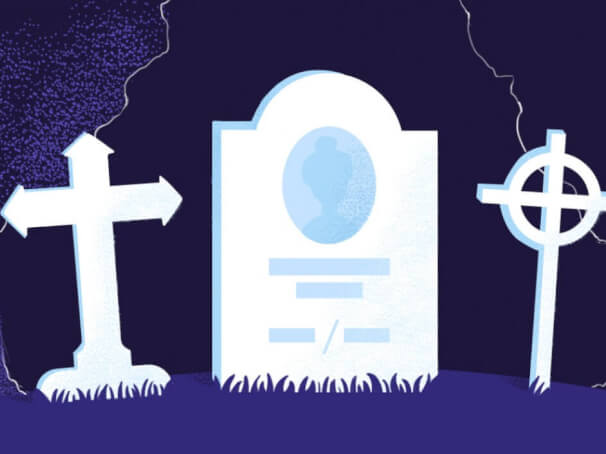
Anxiety is the faulty activation of your fight or flight system at times when there is no fear causing stimuli present. When anxiety hits, it automatically prepares your body to fight or run away by increasing your heart rate, causing sweating, etc.
But anxiety can also change the way you act on a day to day basis, both when you have anxiety and when you don't. In this article, we'll explore some of the common and unusual behavioral changes that occur as a result of anxiety.
Behaviors and Anxiety
Behavior changes are a significant part of most anxiety disorders. By definition anxiety needs to change your behavior in some way to be diagnosed as disorder.
For example, you cannot be diagnosed with a phobia if you do not have a behavioral fear reaction to the phobic stimulus. Simply finding something frightening is not enough; you must change your behavior as a result of the fear. A person with agoraphobia who does not seek medical care when sick due to anxiety caused by leaving the house is an example of a behavior caused by anxiety.
For this article however we fill focus on specific behavior types that often result from anxiety. The following are just a few of the ways anxiety can affect behavior.
Moping Behavior
Perhaps the most common behavior is what some like to call "moping behavior." It is this need or desire to be alone with your own thoughts and try to "deal with your anxiety" without the help of others and without engaging in enjoyable life activities.
When you have anxiety, this may feel like it makes sense. You feel fatigue from your stress and you just want to be alone to recuperate. Despite seeing logic in this approach, this is actually the last thing you want to do. Time spent alone without activity is time spent lost in your own thoughts, and with an anxiety disorder, too much time with nothing but your own thoughts will likely only result in increased anxiety.
Agoraphobia
Similarly, some anxiety disorders can cause a person to develop agoraphobia which refers to someone that refuses to leave their home due to fear and anxiety based in situations that may occur if they leave.
Agoraphobia is often a result of panic disorder and in these cases it occurs because the person starts to associate various locations with panic attacks, until eventually so many places are associated with panic attacks that they feel the only “safe-space” is their home.
Compulsions
The strangest behaviors caused by anxiety are most likely compulsions. When most people think of compulsions they think this symptom only affects those with obsessive compulsive disorder, however, compulsions can occur in response to various anxiety disorders. Many times compulsions will be behaviors that a person does compulsively to rid themselves of their negative, anxiety producing thoughts.
Sometimes these behaviors relate directly to the fear/obsession. For example, a fear of germs may have someone compulsively wash their hands. Sometimes they relate to a need for order, and a person will compulsively place objects or items in a specific order or pattern. In some cases these disorders may not have any relationship to the fear at all, or may be only slightly related. For example:
- Compulsively avoiding cracks in the ground because you are afraid if you step on one you will literally cause your mother to break her back.
- Closing a door three times before leaving to ensure it is securely closed.
- Turning a switch on and off 5 times and having to start over if you are interrupted.
These compulsions are generally created because they provide some type of relief for the person with the negative, anxiety producing thought. It is not clear what causes these thoughts or why certain behaviors reduce them - in some cases it can even be coincidental, such as one day you realized when you walked through a door backwards your anxious thought went away.
No matter what the compulsion is, it can make a person feel unusual due to developing behaviors that are seen as "different" by the norm.
Unhealthy Coping Tools
Those with anxiety may also develop unhealthy coping tools, like substance use. Those types of behaviors are designed to help you cope with anxiety, because they essentially dull the anxiety so that it is not as overbearing in your mind.
Not only are these unhealthy ways to cope but they also may exacerbate the problem they are seeming to help with. Alcohol use can cause anxiety the next day as a result of body stress and dehydration. In addition, the ability to cope with anxiety is a type of "use it or lose it" system. The more you use alcohol to cope with anxiety, the more alcohol becomes your only coping strategy and the one your body feels it needs when it feels stress.
These types of unhealthy coping strategies are common, and not limited to drugs or alcohol. Any strategy that is unhealthy psychologically or physically that is used to dull anxiety is a behavior that can cause significant issues with coping in the future.
Nervous Tics
Some people also develop nervous tics when they're anxious. Examples include shaking your leg up and down, touching your face, winking, or blinking and more. Some of them may also be habits, like picking your nails or clearing your throat - habits are slightly different than tics because they're a bit more under your own control, but they're otherwise automatic when you feel stressed.
Nervous tics remain somewhat mysterious. In many cases it is difficult and potentially even impossible to identify how they developed. It is also unclear why they affect some people but not others. Despite the mystery surrounding them nervous tics and habits are still very common in those with anxiety disorders.
The Behaviors of Anxiety
It is also important to remember that physical behaviors are not the only types of behaviors. Thought behaviors are extremely common with anxiety, including things like:
- Negative self-talk (i.e. "I am going to embarrass myself.")
- Feeling as though you are going crazy.
- Convincing yourself something is wrong with you.
- Sleep disturbances.
- Changes in posture or activity as a result of anxiety.
All of these are still technically behaviors. In a way, anxiety itself is a behavioral issue. It is the activation of the fight or flight response when no fear is present, and upon activation it is not uncommon to find many different types of unusual behaviors and symptoms that arise as a result.
That's why the only way to really stop these behaviors is to take steps to control, manage, and reduce your anxiety.










